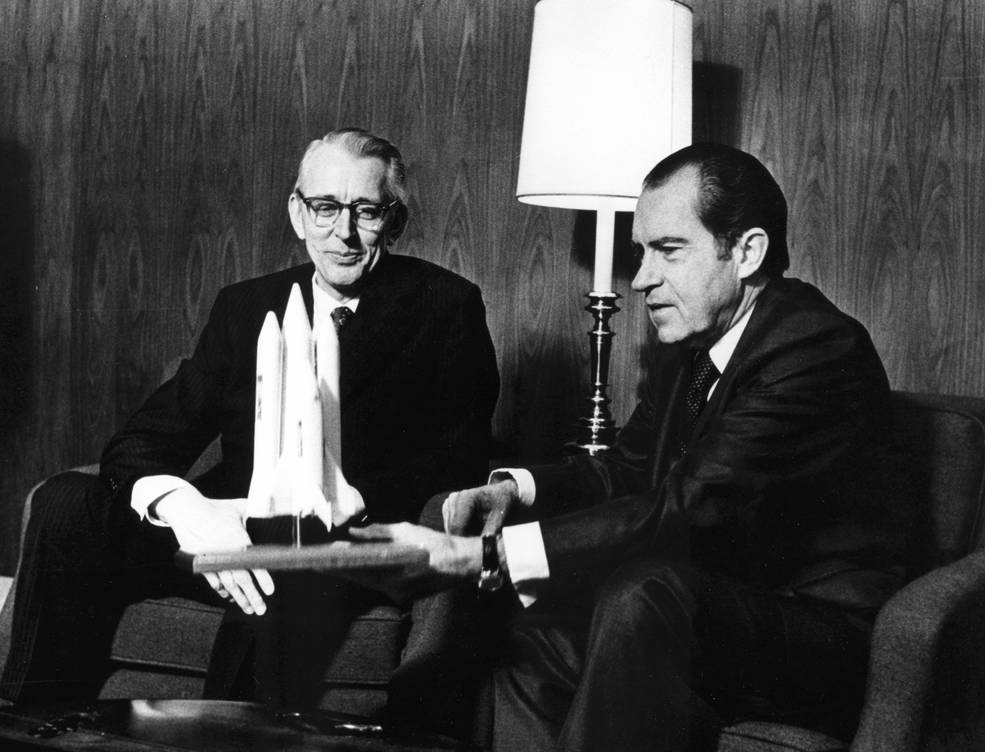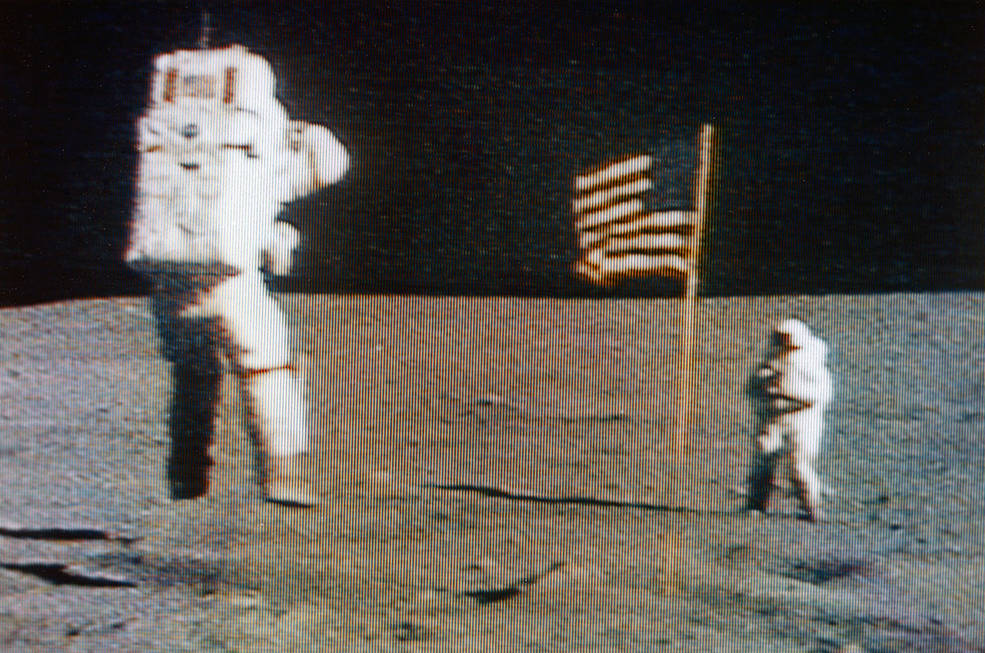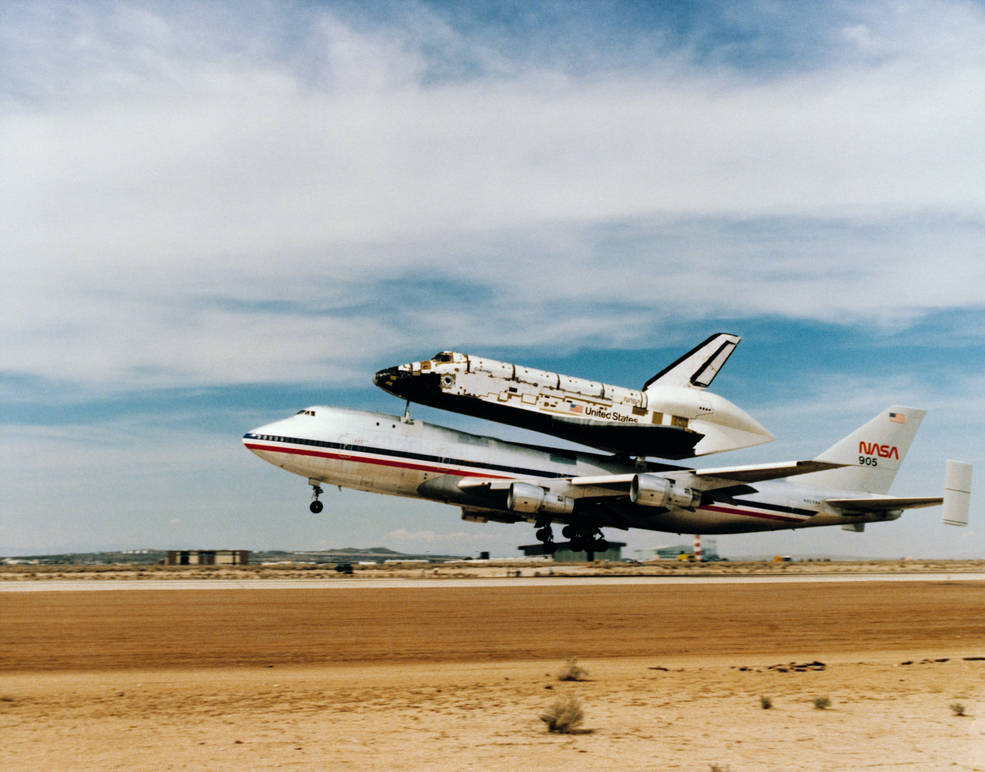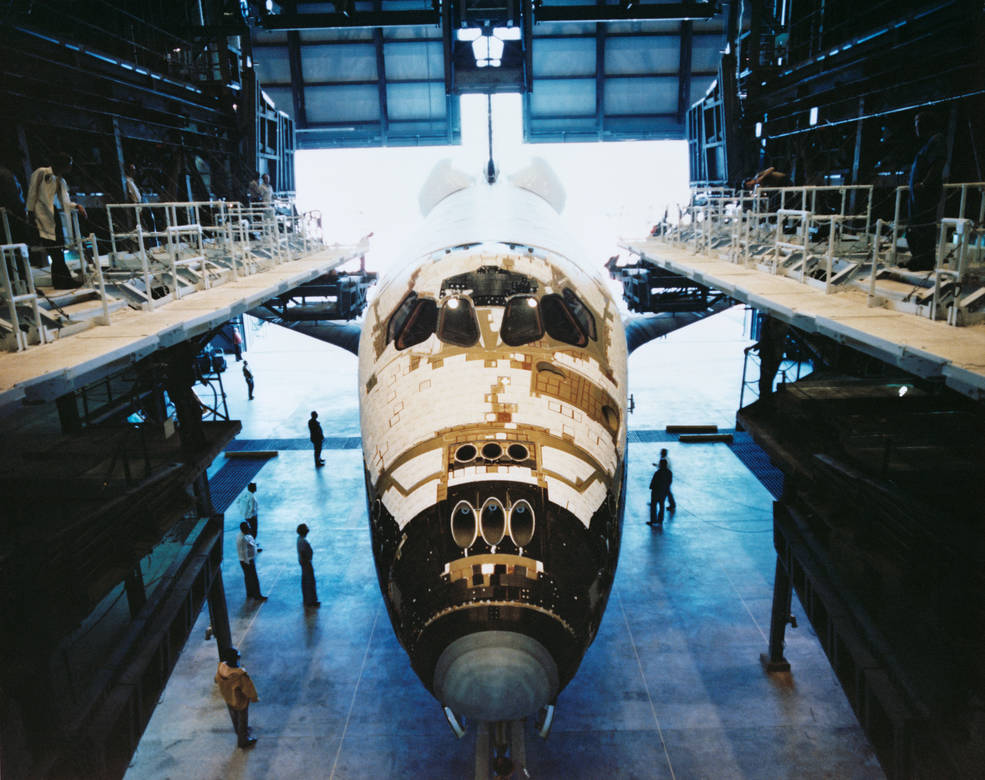Apollo 16 astronaut John W. Young, along with his crewmate Charles M. Duke, were walking on the Moon in April 1972 when Mission Control informed them that Congress had authorized the development of the Space Shuttle. Young and Duke both enthusiastically responded to the positive news with “Beautiful! Wonderful! Beautiful!” Young added with some foresight, “The country needs that shuttle mighty bad. You’ll see.” He had no way of knowing that nine years later, he would be commanding the first ship of the space shuttle fleet, Columbia, on its maiden voyage.


Left: NASA Administrator Fletcher (left) and President Nixon presenting the Space Shuttle.
Right: Apollo 16 astronauts Young (left) and Duke on the Moon.
President Richard M. Nixon announced on Jan. 5, 1972, his decision for NASA to build the Space Shuttle, formally called the Space Transportation System (STS), stating that “it would revolutionize transportation into near space.” NASA Administrator James C. Fletcher hailed the President’s decision as “an historic step in the nation’s space program,” adding that it would change what humans can accomplish in space. Once Congress authorized the funds, NASA on July 26 awarded the contract to the North American Rockwell Corporation of Downey, California, to begin construction of the first orbital vehicle, later named Columbia after Captain Robert Gary’s sloop that explored the Pacific Northwest in the 1790s and was the first American ship to circumnavigate the globe, as well as after the Apollo 11 Command Module. Construction of Columbia’s first components at Rockwell’s Palmdale, California, plant began on March 25, 1975.


Left: Columbia’s crew compartment during assembly in 1976.
Right: Columbia’s aft fuselage and wings during assembly in November 1977.


Left: Workers towing Columbia from Palmdale to Dryden.
Right: Columbia atop the SCA taking off from Dryden to begin the cross-country ferry flight.


Left: Astronaut Donald K. “Deke” Slayton being interviewed in front of the Columbia/SCA during the overnight stop at Kelly AFB in San Antonio. Right: Columbia atop the SCA touching down at KSC.
Nearly four years later on March 8, 1979, Columbia rolled out of the Palmdale facility to begin its multi-day journey across the nation to its launch site, the Kennedy Space Center (KSC) in Florida. The first step was an overland haul to the NASA Dryden Flight Research Center at Edwards Air Force Base (AFB) 36 miles away. Two days later, workers there hoisted Columbia onto the Shuttle Carrier Aircraft (SCA), a Boeing 747 aircraft modified to transport Space Shuttle orbiters. During a test flight, thousands of the orbiter’s temporary thermal protection system tiles fell off. Columbia was returned to the hanger where over 100 men and women worked for nine days reapplying the tiles. Weather then delayed Columbia’s departure until March 20, when the SCA/Shuttle duo flew from Dryden to Biggs AFB in El Paso, Texas, since weather prevented them from reaching their planned refueling stop at Kelly AFB in San Antonio, Texas, until the next day. About 200,000 people went to view the shuttle during its overnight layover in San Antonio. Astronaut Donald K. “Deke” Slayton, program manager for Shuttle Flight Test Operations, was interviewed. After another overnight stop at Eglin AFB in Florida, Columbia atop the SCA touched down at KSC’s Shuttle Landing Facility on March 24.



Left: Columbia in the OPF. Middle: Columbia being hoisted in the VAB for mating with the ET and SRBs.
Right: Columbia rolls out of the VAB on its way to Launch Pad 39A.
The next day, after removing the orbiter from the back of the SCA, workers towed it into the Orbiter Processing Facility, where Columbia spent the next 19 months preparing for its first flight. Rollover to Vehicle Assembly Building (VAB) for mating with the External Tank and the two Solid Rocket Boosters took place Nov. 24, 1980. After series of integrated tests, the Shuttle stack rolled out of the VAB and made the 3.5-mile trip to Launch Pad 39A on Dec. 29, 1980.

































